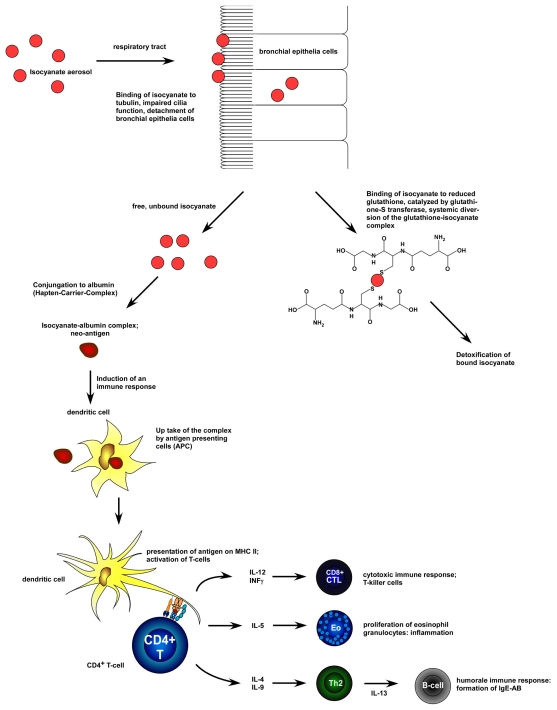Figure 1.
Predicted mechanism for the effects of isocyanate in the development of isocyanate induced asthma. The inhaled isocyanate or its derivates are absorbed by the bronchial epithelia cells, i.e., by binding to tubulin. This results in a local disturbance and impairment of cilia function or a detachment of bronchial epithelia cells. Glutathione S transferase mediates the detoxification process. If the capacity of GSH is exhausted, the free isocyanate can bind to e.g., albumin. This isocyanate-albumin-complex acts as a neo-epitope, that is recognized by the immune system, and is leading to an induction of an immunological process by activation of CD4+ cells. The following inflammation process and, under certain circumstances, an additional induction of IgE antibodies induce the hypersensitivity reaction.

